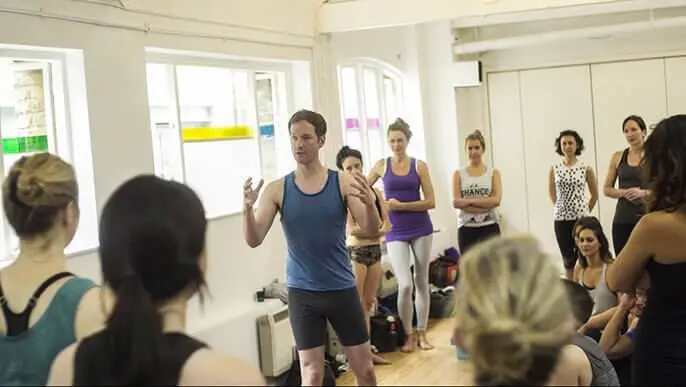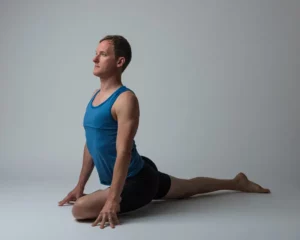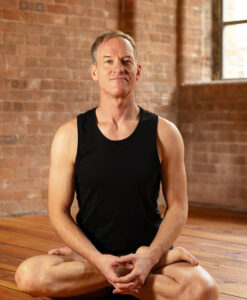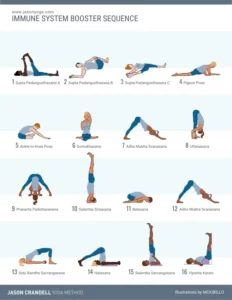Every day during my teacher trainings I give my students time to practice on their own—at their own pace. The practice period is only 15 to 20 minutes, but it gives everyone a little quiet time to integrate the work we’ve been doing as a group. And, it gives everyone the opportunity to work on whatever it is they need at the time. I’ve watched hundreds of students practice in this environment and one thing that stands out: No one goes fast. No one. I’ve never seen one person choose to move at a pace that outstrips their breath. I’ve never seen someone go so fast that they get winded. I’ve seen people choose to practice quiet, restorative poses. I’ve seen people choose ridiculously demanding poses. I’ve seen people choose everything in between. But, I’ve never seen someone move so fast that they can’t breathe deeply.
In the modern world where everything has gotten faster and faster—including most styles of contemporary yoga—how do we pace a class so that it’s physically satisfying and mentally engaging without sacrificing important details that keep yoga safe and mindful? How do we make sure that there’s still some yoga in our yoga class? As teachers, how do we trust that we don’t have to make our mark by being teaching the fastest flows in town?
These are all important questions and they’re admittedly hard to answer conclusively in a 1,000 words. To be fair, we also have to acknowledge that pacing is somewhat subjective. One student’s “fast” is going to be too slow for another student. One student’s “slow” is going to be too fast for another student. So, like other aspects of teaching, teachers have to let go of the idea that they’re going to strike a perfect pacing balance for everyone.
It’s best to think about pacing as a tool to communicate what you are teaching. If you are teaching a mellow hip-opening class, you want the pace to be slow and soothing. On the other hand, if you’re teaching an invigorating sequence of standing poses, you may opt for a strong, steady pace. In both of these scenarios, you have to consider the experience you are aiming to give your students and tailor the flow accordingly.
The following three considerations will help you pace your yoga classes skillfully:
Yoga class pacing and momentum should facilitate—not detract—from awareness
Imagine that you have just arrived in a foreign city and you’ve decided to do a walking tour. But, well, you just want to get so much done on the walking tour that you run as fast as you can from scenic point to scenic point. Kudos to you, you completed the walking tour in record time! (Wow, what an accomplishment!) But, what did you notice about the scenic points? What did you notice about the sights, scents, and sounds? Did you notice any subtlety and detail or did you just get so much done?
The whole idea of sprinting through your vacation is, well, ridiculous. So, why would you sprint through your yoga practice? Is your practice just another thing to get done in order to have a sense of accomplishment? If so, what exactly do you feel you’re accomplishing?
In general, the pace of a vinyasa practice should be in direct proportion to a student’s ability to focus on the details that are present in their body, breath, and mind. This means that sprinting through a vinyasa practice to do 400 postures is unnecessary and ineffective because very little is understood in the process. That said, doing six poses in a 90-minute class isn’t the best solution either—at least not in a vinyasa practice. Other practices work this way to great effect, but this isn’t in keeping with the heart of vinyasa yoga.
Practice observing your students as they glide from pose to pose and notice if they are moving with awareness and skill. Notice if the pace is helping them focus on their practice. If not, notice if are you lulling them to sleep or accidentally teaching a spinning class (not that there’s anything wrong with spinning). Find the middle ground that captivates your students’ attention and provides them with a strong, satisfactory experience without making them run on fumes.
Pace your yoga class like a bell-curve
It is helpful to imagine the pace of class as a bell-curve. You start class slowly and gently pick-up the tempo until it has a strong, yet sustainable tempo. Once you have hit the apex of your class, you can begin to slow the pace and settle in. This doesn’t mean that the peak-pose or crescendo of class has to be paced intensely. In fact, you may decide to slow things considerably as you work the most difficult postures in your yoga sequence.
The important thing to take away is that pacing yoga transitions should not be abrupt. Instead, students should be taken from a quiet beginning, through a substantial adventure, and brought to a relaxing finish. The pacing along the way should accelerate and decelerate incrementally and in proportion to the intensity that you want to deliver in any given class.
Keep with the theme of class
As previously stated, yoga class pacing is one of several tools that you have at your disposal to communicate the essence of your teaching. It’s in the same toolkit as sequencing, adjusting, demonstrating, verbalizing, and so on. This means that the pace of your class should not be taken for granted or assumed. Instead, it should be a mindfully implemented instrument of your teaching. As such, your pace should be in-tune with your sequence and the teaching points of your class. Of course, your pacing—like the other elements in your teaching toolkit—is subjective and open to exploration.



